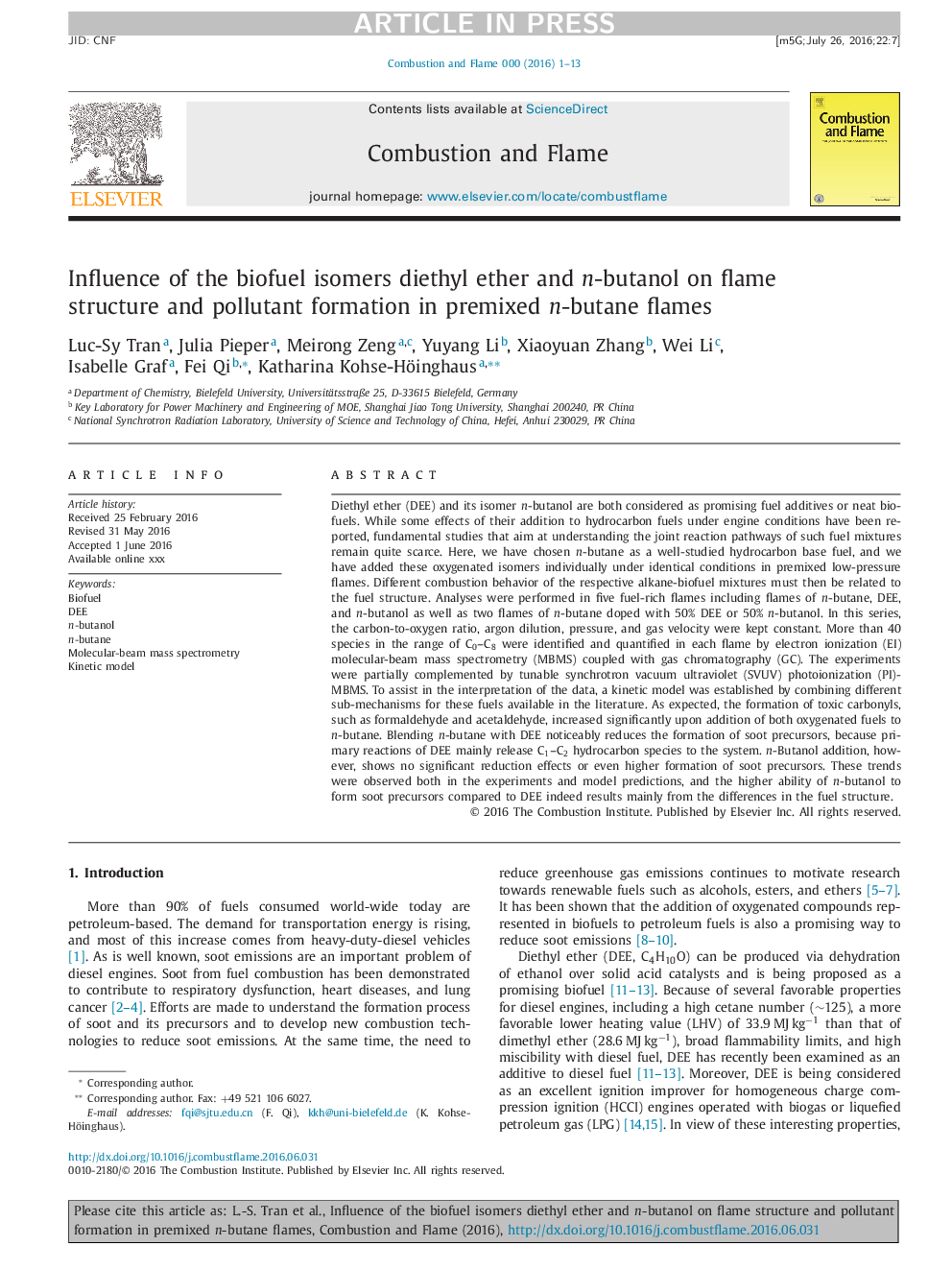| کد مقاله | کد نشریه | سال انتشار | مقاله انگلیسی | نسخه تمام متن |
|---|---|---|---|---|
| 4764521 | 1423562 | 2017 | 13 صفحه PDF | دانلود رایگان |
عنوان انگلیسی مقاله ISI
Influence of the biofuel isomers diethyl ether and n-butanol on flame structure and pollutant formation in premixed n-butane flames
ترجمه فارسی عنوان
تأثیر ایزومرهای سوخت زیستی دی اتیل اتر و نان بوتانول بر ساختار شعله و تشکیل آلودگی در شعله های پیش مخلوط نان بوتان
دانلود مقاله + سفارش ترجمه
دانلود مقاله ISI انگلیسی
رایگان برای ایرانیان
کلمات کلیدی
موضوعات مرتبط
مهندسی و علوم پایه
مهندسی شیمی
مهندسی شیمی (عمومی)
چکیده انگلیسی
Diethyl ether (DEE) and its isomer n-butanol are both considered as promising fuel additives or neat biofuels. While some effects of their addition to hydrocarbon fuels under engine conditions have been reported, fundamental studies that aim at understanding the joint reaction pathways of such fuel mixtures remain quite scarce. Here, we have chosen n-butane as a well-studied hydrocarbon base fuel, and we have added these oxygenated isomers individually under identical conditions in premixed low-pressure flames. Different combustion behavior of the respective alkane-biofuel mixtures must then be related to the fuel structure. Analyses were performed in five fuel-rich flames including flames of n-butane, DEE, and n-butanol as well as two flames of n-butane doped with 50% DEE or 50% n-butanol. In this series, the carbon-to-oxygen ratio, argon dilution, pressure, and gas velocity were kept constant. More than 40 species in the range of C0-C8 were identified and quantified in each flame by electron ionization (EI) molecular-beam mass spectrometry (MBMS) coupled with gas chromatography (GC). The experiments were partially complemented by tunable synchrotron vacuum ultraviolet (SVUV) photoionization (PI)-MBMS. To assist in the interpretation of the data, a kinetic model was established by combining different sub-mechanisms for these fuels available in the literature. As expected, the formation of toxic carbonyls, such as formaldehyde and acetaldehyde, increased significantly upon addition of both oxygenated fuels to n-butane. Blending n-butane with DEE noticeably reduces the formation of soot precursors, because primary reactions of DEE mainly release C1-C2 hydrocarbon species to the system. n-Butanol addition, however, shows no significant reduction effects or even higher formation of soot precursors. These trends were observed both in the experiments and model predictions, and the higher ability of n-butanol to form soot precursors compared to DEE indeed results mainly from the differences in the fuel structure.
ناشر
Database: Elsevier - ScienceDirect (ساینس دایرکت)
Journal: Combustion and Flame - Volume 175, January 2017, Pages 47-59
Journal: Combustion and Flame - Volume 175, January 2017, Pages 47-59
نویسندگان
Luc-Sy Tran, Julia Pieper, Zeng Meirong, Li Yuyang, Zhang Xiaoyuan, Li Wei, Isabelle Graf, Qi Fei, Katharina Kohse-Höinghaus,
